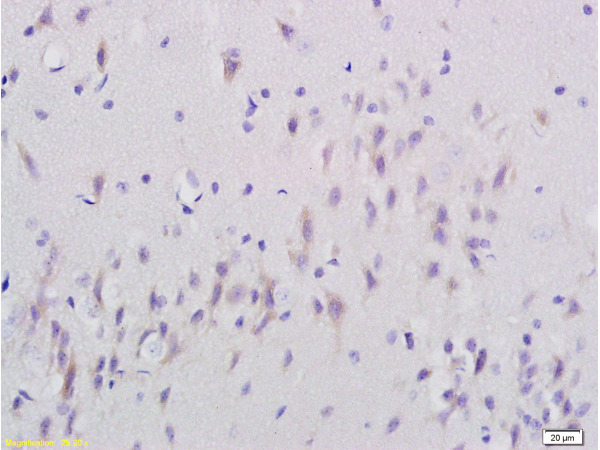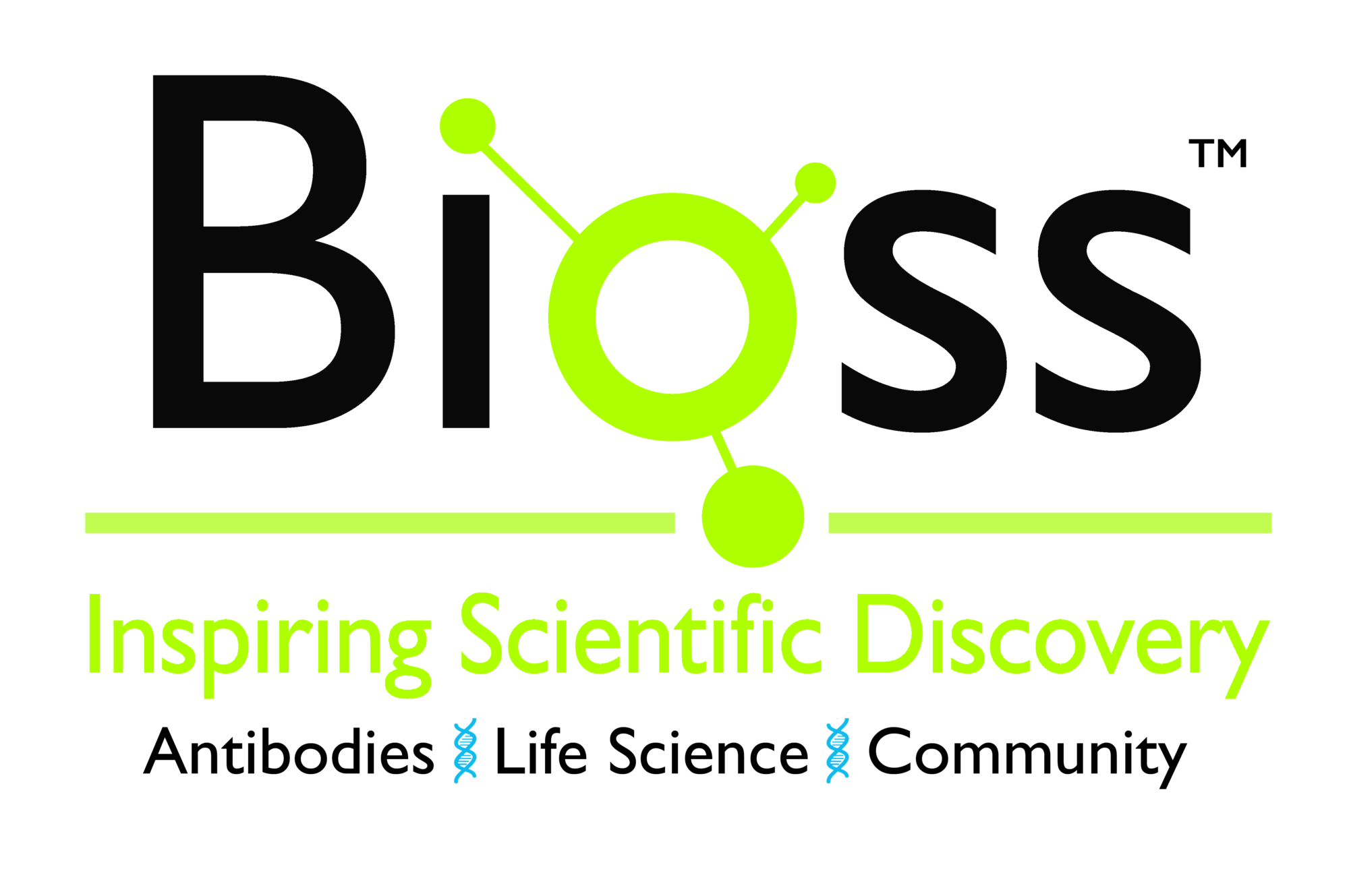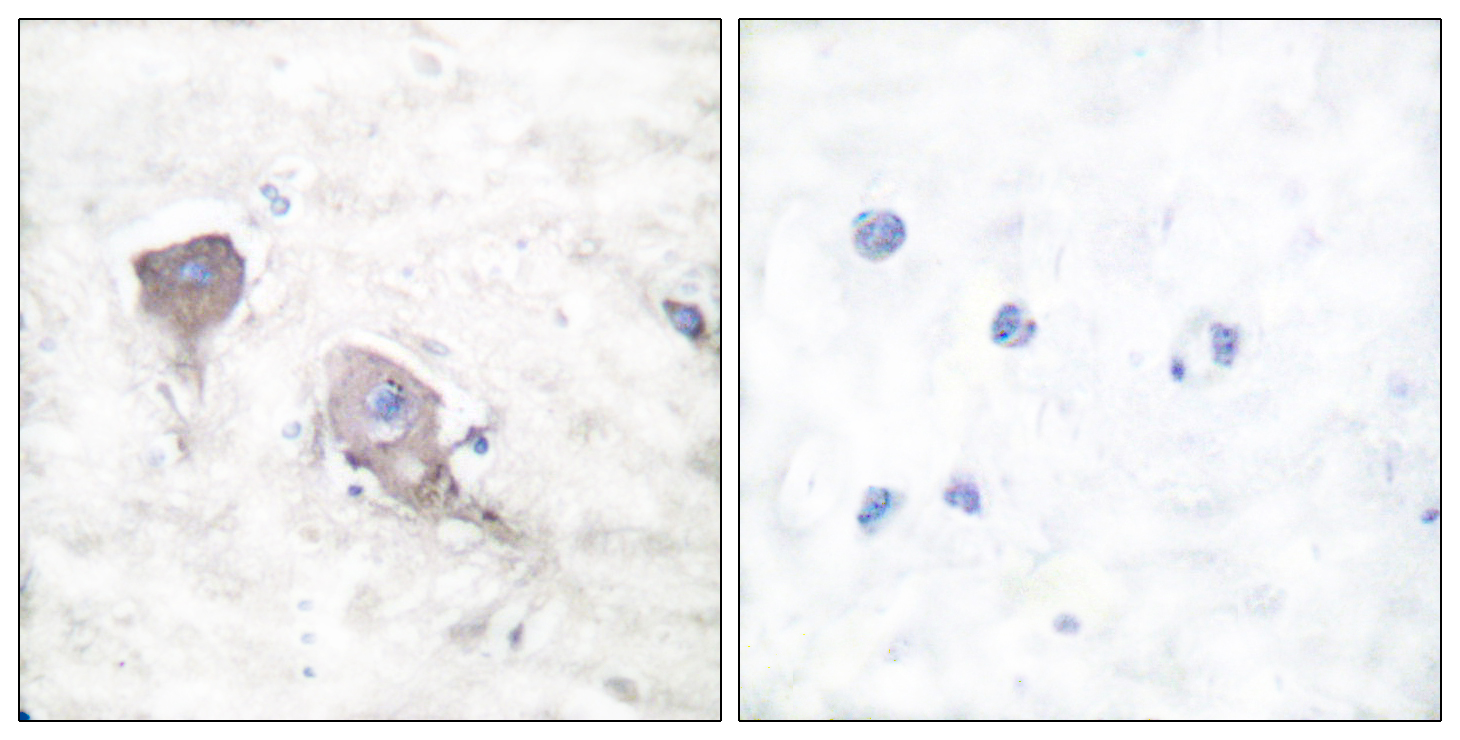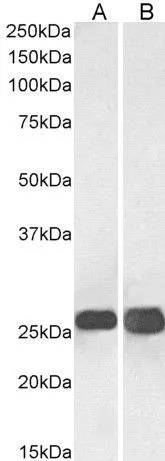SNAP25 antibody
GTX113839
ApplicationsImmunoFluorescence, Western Blot, ImmunoCytoChemistry, ImmunoHistoChemistry, ImmunoHistoChemistry Frozen, ImmunoHistoChemistry Paraffin
Product group Antibodies
ReactivityHuman, Mouse, Rat, Zebra Fish
TargetSNAP25
Overview
- SupplierGeneTex
- Product NameSNAP25 antibody
- Delivery Days Customer9
- Application Supplier NoteWB: 1:500-1:3000. ICC/IF: 1:100-1:1000. IHC-P: 1:100-1:1000. IHC-Fr: 1:100-1:1000. *Optimal dilutions/concentrations should be determined by the researcher.Not tested in other applications.
- ApplicationsImmunoFluorescence, Western Blot, ImmunoCytoChemistry, ImmunoHistoChemistry, ImmunoHistoChemistry Frozen, ImmunoHistoChemistry Paraffin
- CertificationResearch Use Only
- ClonalityPolyclonal
- Concentration0.27 mg/ml
- ConjugateUnconjugated
- Gene ID6616
- Target nameSNAP25
- Target descriptionsynaptosome associated protein 25
- Target synonymsCMS18, DEE117, RIC-4, RIC4, SEC9, SNAP, SNAP-25, SUP, bA416N4.2, dJ1068F16.2, synaptosomal-associated protein 25, resistance to inhibitors of cholinesterase 4 homolog, synaptosomal-associated protein, 25kDa, synaptosome associated protein 25kDa
- HostRabbit
- IsotypeIgG
- Protein IDP60880
- Protein NameSynaptosomal-associated protein 25
- Scientific DescriptionSynaptic vesicle membrane docking and fusion is mediated by SNAREs (soluble N-ethylmaleimide-sensitive factor attachment protein receptors) located on the vesicle membrane (v-SNAREs) and the target membrane (t-SNAREs). The assembled v-SNARE/t-SNARE complex consists of a bundle of four helices, one of which is supplied by v-SNARE and the other three by t-SNARE. For t-SNAREs on the plasma membrane, the protein syntaxin supplies one helix and the protein encoded by this gene contributes the other two. Therefore, this gene product is a presynaptic plasma membrane protein involved in the regulation of neurotransmitter release. Two alternative transcript variants encoding different protein isoforms have been described for this gene. [provided by RefSeq]
- ReactivityHuman, Mouse, Rat, Zebra Fish
- Storage Instruction-20°C or -80°C,2°C to 8°C
- UNSPSC12352203
References
- Cao K, Xiang J, Dong YT, et al. Activation of α7 Nicotinic Acetylcholine Receptor by its Selective Agonist Improved Learning and Memory of Amyloid Precursor Protein/Presenilin 1 (APP/PS1) Mice via the Nrf2/HO-1 Pathway. Med Sci Monit. 2022,28:e933978. doi: 10.12659/MSM.933978Read this paper
- Liang D, Xue Z, Xue J, et al. Sinoatrial node pacemaker cells share dominant biological properties with glutamatergic neurons. Protein Cell. 2021,12(7):545-556. doi: 10.1007/s13238-020-00820-9Read this paper
- Abdallah IM, Al-Shami KM, Yang E, et al. Blood-Brain Barrier Disruption Increases Amyloid-Related Pathology in TgSwDI Mice. Int J Mol Sci. 2021,22(3). doi: 10.3390/ijms22031231Read this paper
- Xu Y, Cao K, Guo B, et al. Lowered levels of nicotinic acetylcholine receptors and elevated apoptosis in the hippocampus of brains from patients with type 2 diabetes mellitus and db/db mice. Aging (Albany NY). 2020,12(14):14205-14218. doi: 10.18632/aging.103435Read this paper
- Cao K, Dong YT, Xiang J, et al. The neuroprotective effects of SIRT1 in mice carrying the APP/PS1 double-transgenic mutation and in SH-SY5Y cells over-expressing human APP670/671 may involve elevated levels of α7 nicotinic acetylcholine receptors. Aging (Albany NY). 2020,12(2):1792-1807. doi: 10.18632/aging.102713Read this paper
- Wang XL, Deng YX, Gao YM, et al. Activation of α7 nAChR by PNU-282987 improves synaptic and cognitive functions through restoring the expression of synaptic-associated proteins and the CaM-CaMKII-CREB signaling pathway. Aging (Albany NY). 2020,12(1):543-570. doi: 10.18632/aging.102640Read this paper
- Al Rihani SB, Lan RS, Kaddoumi A. Granisetron Alleviates Alzheimer's Disease Pathology in TgSwDI Mice Through Calmodulin-Dependent Protein Kinase II/cAMP-Response Element Binding Protein Pathway. J Alzheimers Dis. 2019,72(4):1097-1117. doi: 10.3233/JAD-190849Read this paper
- Cao K, Xiang J, Dong YT, et al. Exposure to fluoride aggravates the impairment in learning and memory and neuropathological lesions in mice carrying the APP/PS1 double-transgenic mutation. Alzheimers Res Ther. 2019,11(1):35. doi: 10.1186/s13195-019-0490-3Read this paper
- Duong QV, Kintzing ML, Kintzing WE, et al. Plasma Rich in Growth Factors (PRGF) Disrupt the Blood-Brain Barrier Integrity and Elevate Amyloid Pathology in the Brains of 5XFAD Mice. Int J Mol Sci. 2019,20(6). doi: 10.3390/ijms20061489Read this paper
- Elfakhri KH, Abdallah IM, Brannen AD, et al. Multi-faceted therapeutic strategy for treatment of Alzheimer's disease by concurrent administration of etodolac and α-tocopherol. Neurobiol Dis. 2019,125:123-134. doi: 10.1016/j.nbd.2019.01.020Read this paper





